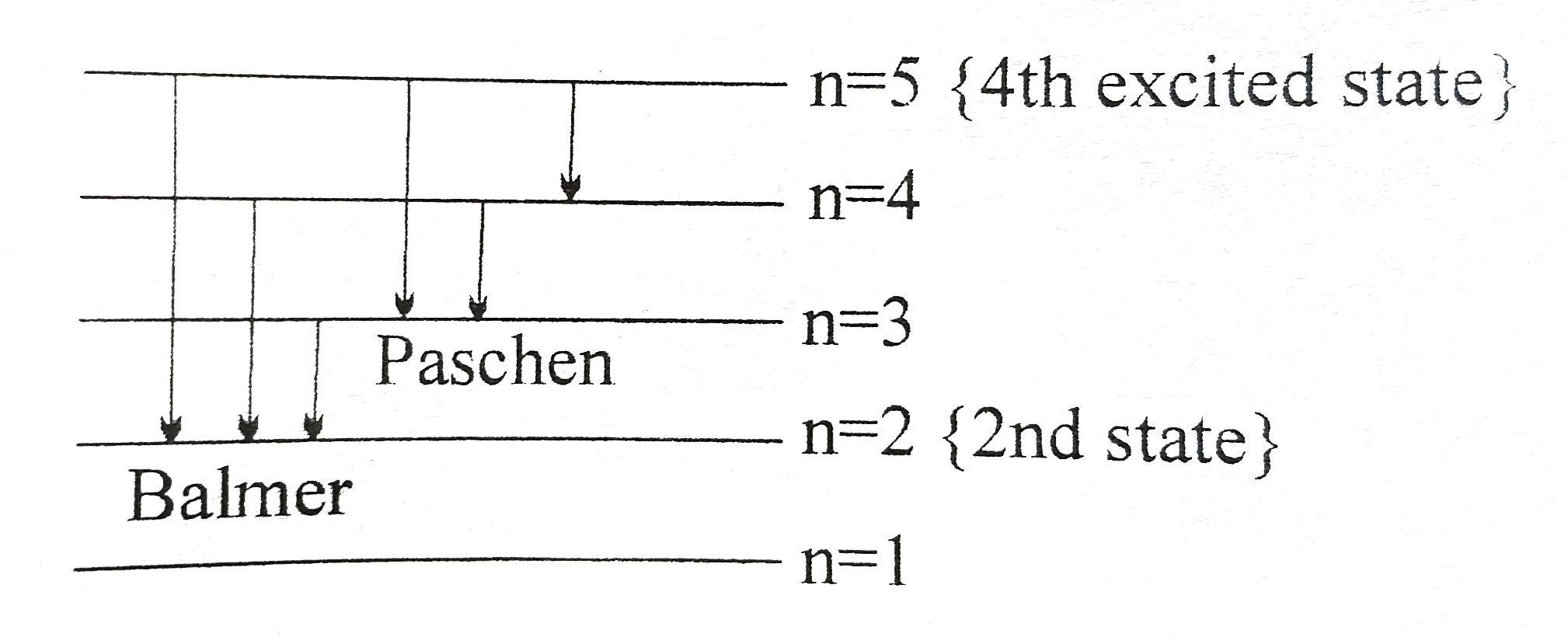In a H- like sample electron makes transition from 4th excited state of 2nd state then:
10 different spectral lines are observed
6 different spectral lines are observed
Number of line belonging to the the Blamer series id 3.
Number of line belonging to the the Blamer series id 2.
The correct Answer is:B, C, D
Topper's Solved these Questions
- ATOMIC STRUCTUREBook:BANSALChapter:ATOMIC STRUCTUREExercise:MATCH THE COLUMN
Explore 10 Videos
- ATOMIC STRUCTUREBook:BANSALChapter:ATOMIC STRUCTUREExercise:Exercise.3
Explore 35 Videos
- ATOMIC STRUCTUREBook:BANSALChapter:ATOMIC STRUCTUREExercise:REASONING TYPE
Explore 10 Videos
- GENERAL ORGANIC CHEMISTRYBook:BANSALChapter:GENERAL ORGANIC CHEMISTRYExercise:Exercise 3
Explore 9 Videos
Similar Questions
In a single isolated atom an electron make transition from 5th excited state to 2nd state then maximum number of different types of photons observed is
View SolutionIf electron make transition from 7th excited state to 2nd state in H atom sample find the max. number of spectral lines observed.
View Solution
Knowledge Check
In a H-like sample, electrons make transition from 4th excited state upto 2nd state. Then ,
A10 different spectral lines are observedB6 different spectral lines are observedCnumber of lines belonging to the balmer series is 3DNumber of lines belonging to paschen series is 2In a sample of H-atom electrons make transition from 5th excited state to ground state, producing all possible types of photons, then number of lines in infrared region are
A4B5C6D3In a sample of H− atom electrons make transition from 5th excited state to ground state, producing all possible types of photons, then number of lines in infrared region are
A4B5C6D3
In a single isolated atom of hydrogen electron make transition from 4th excited state to grond state producing maximum possible number of wavelengths if the 2nd lowest energy of these lines is used to further excite an already excited sample of Li2+ ion then transition will be
View SolutionAs an electron makes a transition from an excited state to the ground state of a hydrogen - like atom //ion
View SolutionAs an electron makes a transition from an excited state to the ground state of hydrogen-like atom/ion:
View SolutionAn electron in a hydrogen atom makes a transition from first excited state to ground state . The equivelent currect due to circulating electron :
View SolutionAn electron in a hydrogen in a hydrogen atom makes a transition from first excited state to ground state. The equivelent current due to circulating electron
View Solution

